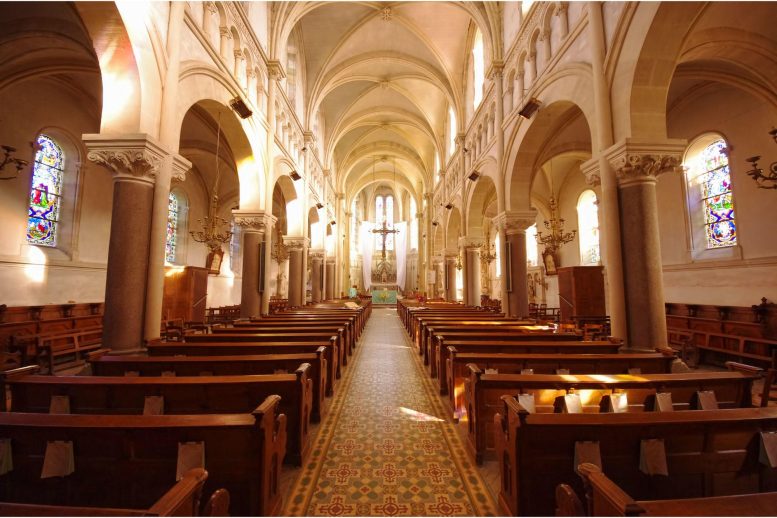
Churches are places of worship for followers of various religions. They are often central to the spiritual and social lives of their communities, providing a place for people to gather, pray, and learn about their faith.
An audit has found that the future of rural churches depends on their value to the wider community as assets.
According to an audit conducted in Cambridgeshire and West Norfolk, a third of church buildings are costing more money each year than they are able to raise, and only one in five is financially profitable.
A report recently released by the Cambridge Judge Business School and the Diocese of Ely states that in order to secure their future, churches must be useful to their communities and find ways to maintain financial sustainability.
Researchers surveyed all 334 churches in the Diocese of Ely, receiving responses from 73%. They found that churches played a significant role in communities with three-quarters of respondents noting that the closure of their local church would have a “devastating impact”. Church buildings were most valued for providing rites of passage services (78%), being a place for religious worship (72%), and offering a quiet space for reflection, thinking, and meditation (69%).
“Evaluating the success of the church in terms of the number of funds it raises and the size of its congregation undervalues the contribution that churches and church buildings make to a community,” said lead author Helen Haugh, Associate Professor in Community Enterprise at Cambridge Judge Business School and Research Director at the Cambridge Centre for Social Innovation at Cambridge Judge.
“There are options for churches that struggle with financial sustainability, the least preferred of which is to close the church. Our research is about finding ways to keep churches open.”
The audit assessed the wider community use of church buildings and the contribution that churches made to the common good. They found that three-quarters of church buildings held community activities in 2019, an increase of 27% since 2012. “These ranged from blood donation to debt counseling and coffee mornings to concerts,” said Dr. Timur Alexandrov, Postdoctoral Research Associate of the project.
“Churches want to work in collaboration with communities,” said Haugh. “I was surprised by how innovatively church buildings are being used. For example, one is used as a space for a circus troupe to practice in – they needed a high ceiling!”
The study, REACH Ely (Reimagining Churches as Community Assets for the Common Good), gives ten recommendations for churches to connect with the wider population. These will support the Diocesan Strategy for growth to the year 2025 and beyond – People Fully Alive: Ely 2025. The free resources are available online to help churches plan for the future and engage with their local communities.
The recommendations include replicating events that generate a high footfall, using social media to reach a wider audience, and integrating with the community by partnering with schools and co-organizing events for children at church buildings and church halls.
Tools being made available to churches include video interviews, developed by Dr. Alexandrov, with churches who have been successful at embedding themselves in their local communities, guidance documents, and templates to assist with the process of re-imagining church buildings as community assets.
“Over the past three years the work of REACH Ely has discovered some real secrets of success for rural churches,” said Geoffrey Hunter, Head of Church Buildings and Pastoral at the Diocese of Ely.
“The project has revealed a hunger for change, with many churches planning for their futures. Through a combination of videos, guidance, and practical tools, we will be helping to replicate the success stories, so more of our churches can look forward to a sustainable future as community assets, loved and supported by all.”
Reference: “Church Buildings & Community Audit Report” by Timur Alexandrov, Helen Haugh and Geoffrey Hunter.
The report was funded by the Benefact Trust, Historic England, and the Diocese of Ely.









The early church met in homes. And it was about 270 ad before any mention of buildings. The churches today,and the leaders r so different than the early church. Paul plainly says,’I work with my own hands that I might not be a burden to you.’
Today,many think success as a leader is being a millionaire. The very first thing the early church did was sell what they had and lay at the apostles feet that none might lack.then they set up leaders to care for the poor,the widows,the orphans. T.in many of so called churches today,u could be afraid member and no one would notice. It seems the focus is mostly on taking care of the leaders,more like worshiping them.
I have been saved going on 54 years..and the difference in churches from then…and today..is pathetic .instead of studying the Bible..u study books that make the authurs wealthy . U watch TV and send money to millionaires. U seldom hear sermons that might offend peoe.bit u will hear sermons that help the church building keep their best tithers.
And we wonder what’s happening to our country.
The early church met in homes. And it was about 270 ad before any mention of buildings. The churches today,and the leaders r so different than the early church. Paul plainly says,’I work with my own hands that I might not be a burden to you.’
Today,many think success as a leader is being a millionaire. The very first thing the early church did was sell what they had and lay at the apostles feet that none might lack.then they set up leaders to care for the poor,the widows,the orphans. Today in many of so called churchesu could be a dead member and no one would notice. It seems the focus is mostly on taking care of the leaders,more like worshiping them.
I have been saved going on 54 years..and the difference in churches from then…and today..is pathetic .instead of studying the Bible..u study books that make the authurs wealthy . U watch TV and send money to millionaires. U seldom hear sermons that might offend peoe.but u will hear sermons that help the church building keep their best tithers.
And we wonder what’s happening to our country.
well, you are part of the problem. There’s no them versus us. Be a part of the solution instead of finding faults.
Now that toxic political ideologies like fem-in-ism have turned places of worship to places of secular woke indoctrination on one hand, and also because you now “don’t belong” unless you believe marriage is only valid for heterosexual couples on the other hand…
The church is the place that God’s children conveniently meet to learn and share fellowship
The fact that some are taking advantage of it to enrich themselves is a matter of concern but does not necessarily negate the important role it plays in the life of the believers
For us who are seeing it as a catastrophe ahead, let’s take time off to seek the help that has been offered as long as there are no strings attached
The most important is to pray and talk to God about it. He will show up to salvage any property that is endangered. He remains God, and with Him ‘nothing is impossible’
If He heard the cry of them seeking a place for worship and provided, He is also able to intervene if we in this dispensation, will humble ourselves and pray ( ask Him to come to our aid)
It was not a cheap project those days when they were built. They trusted God’s favor and supply.
To maintain it, we can also go back and He will show up to guide us to restore all those buildings
Watch out…… any group that rises up and calls on God’s help WILL NOT LOSE THEIR BUILDING
Glad people are starting to realize that these bronze age goat herder mythologies are nothing to take serious. Keep the cool buildings, lose the delusions.
Community Centers that offer resources for residents is a better option than using Churches. The main reason they exist is religious indoctrination. All the other activities are just a lure to get people into the Church for proselytizing purposes.
i am 64 and love att÷nding church but moved to new town to retire and find churches unfriendly and gossipy. not the my vision for the bride of Christ. ive quit going.
The “Church” is the community of people, the “home church” expanded, not a building but the building is also a beacon to gather people…the “sick” especially because Christ came to heal the sick not the saints…Churches fundamentally have also a social impact. Originally Christians after it was legally admitted into the Empire by Constantin, gathered into large buildings -the equivalent of City Halls today or markets- put up an image -usually Christ’s or a cross- and prayed together then liturgies came about and so on and so forth…while Churches are sometimes overabundantly wrapped in splendor mainly as a thanks to God, still simple ones should be helped to survive but truly if the community doesn’t take responsibility then Government should step in for some help but once again if faithful ones cannot sustain that burden or are not willing to then the Church as a building has no reason to exist but it can thrive in smaller communities in the houses … It is not nice but we have to remember that this world is the Principate of the Prince of Hell … so more so as we are witnessing today due to this separation from God…it makes me laugh and saddens me at the same time when I read comments talking about “fables” “myths”, etc. because that is exactly what the work of the evil one is doing including talking about “community centers” … Community centers are good but what good is it in there if they are permeated by a Godless society and are separated from God … For every time there is a season and for each there what is God’s and what is Caesar’s
I was a music director and organist in various churches for 40+ years. It is said churches are hospitals for souls, but I always wound up in the psychiatric wards. Most church people are sociopathic misanthropes. Let churches die their deserved and natural deaths, especially popish churches – which weren’t psychiatric wards, but pederastic brothels.